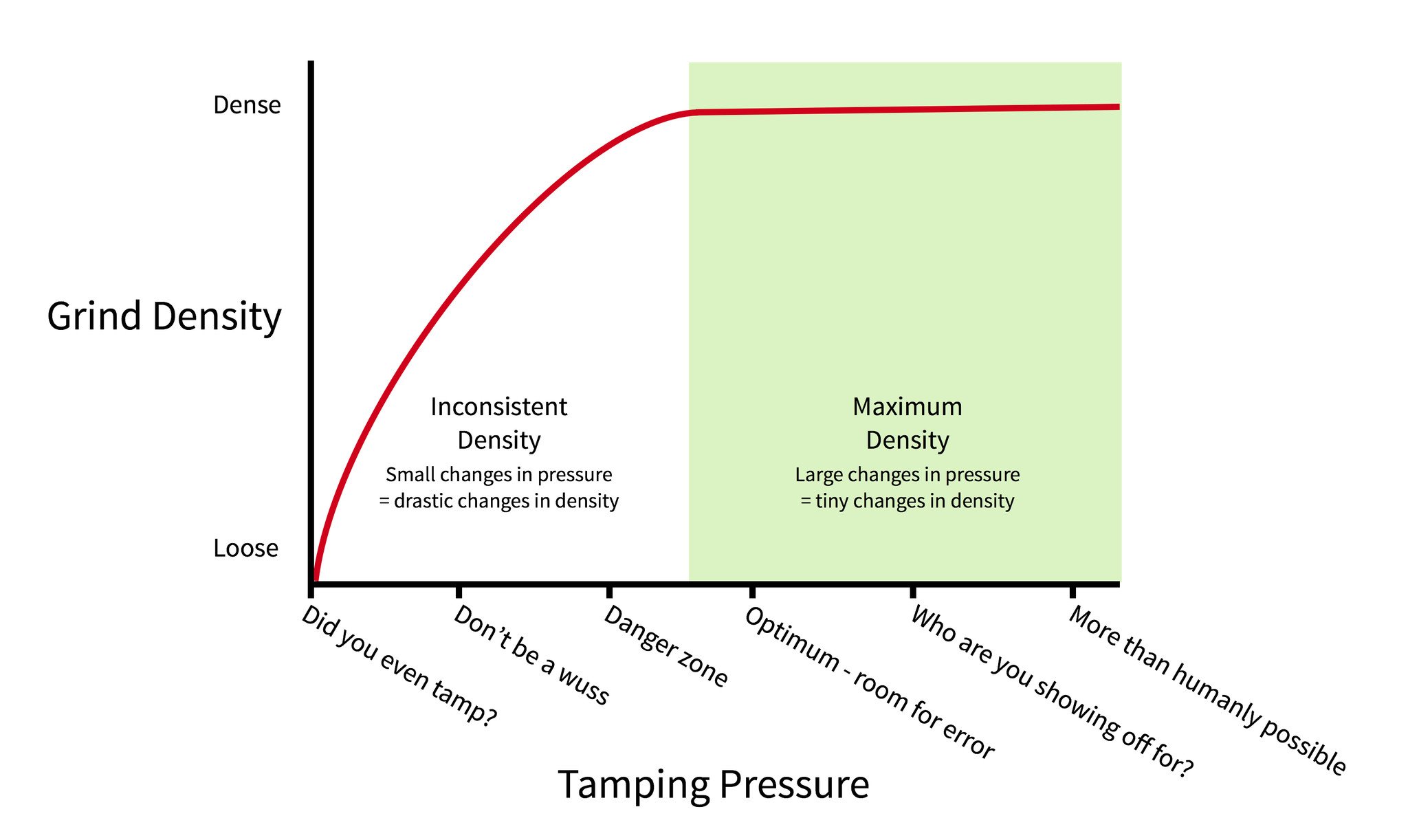Tamping for espresso is riddled with a surprising amount of folk-knowledge. Back in 2008, practicing tamping on bathroom scales was the advice given, though the ideal weight often went unspecified. Today, it’s clear that tamping pressure is important, but it turns out, it’s also straightforward to get right.
Tamping essentially involves compressing coffee grinds to ensure even extraction in a way that’s ergonomic and consistent. When coffee grinds aren’t uniformly dense, water finds shortcuts through those airy spaces, speeding through and causing uneven extraction. By tamping, you eliminate those voids, letting grind size dictate the flow rate instead of air pockets.
The aim is for water to flow evenly through the entire mass of grinds, avoiding any low-density areas. Water tends to take the path of least resistance, so an evenly dense coffee bed created by a perfectly flat, horizontal tamp ensures balanced extraction. Curved tampers are counterproductive here; flat tampers are the way to go.
From an ergonomic perspective, the pressure applied should be as minimal as possible while still achieving these goals. Baristas often suffer from repetitive strain injuries, so finding the lightest effective pressure is crucial. In terms of consistency, tamping pressure should not be the variable that controls the flow rate—grind size should be. Achieving consistent tamping pressure every time is generally impractical for humans, which is why eliminating it as a variable is beneficial.
Maximum density is the point where the coffee grinds can no longer be compressed further. At this stage, applying additional pressure won’t change the density of the grinds. This is good news because it means you can’t overdo the tamping pressure. Once maximum density is achieved, the job is done. It doesn’t take much pressure to reach this point; simply press until the tamper stops moving.
Using lighter tamping pressure in an attempt to control flow rate is unreliable and inconsistent. Slight variations in pressure can lead to significant changes in density and, consequently, flow rate. Therefore, the best way to achieve consistency is by aiming for maximum density every time. When the tamper stops moving, stop pressing—this ensures consistent density and balanced extraction.
Whether the pressure feels lighter or heavier than what you’re used to, the key takeaway is consistency in achieving maximum density. This not only ensures a better extraction but also promotes a healthier barista life.
